South Africa is a birding safari paradise with its diverse ecosystems, spread across nine biomes, hosting an extraordinary 800 recorded bird species. Avid bird watchers and all-round nature lovers can take in the flight of the African Fish Eagle or the cute waddle of the endangered African Penguin across the country’s top bird-watching destinations, Kruger National Park, the West Coast National Park, and the iSimangaliso Wetland Park.
Join us on an exciting journey through the skies of South Africa, featuring 10 outstanding birds that you shouldn’t miss on your next South African safari:
1. African Penguin (Spheniscus demersus)
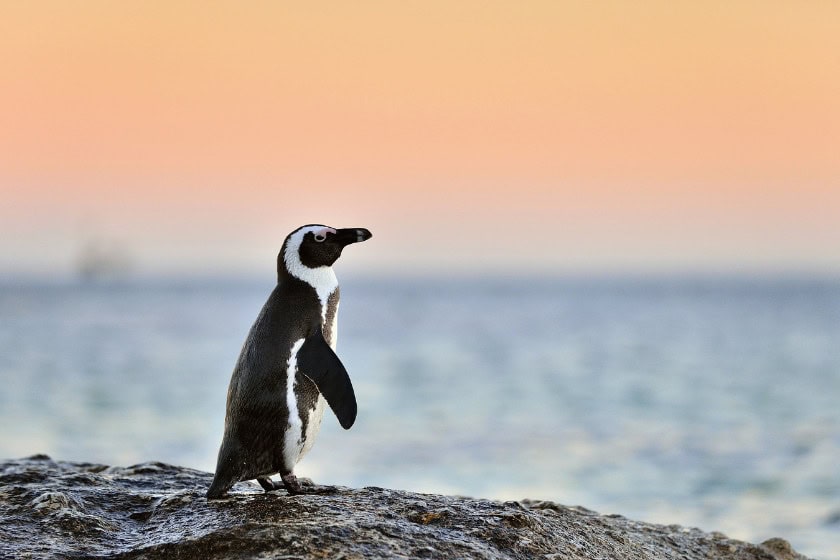
South Africa is one of the few places on the African continent where you can spot this little fellow with its smart black-and-white ‘tuxedo-like’ coat. Previously known as the jackass penguin because of its donkey-like bray, the African penguin reaches a height of between 60 – 70 cm (24 – 28 inches).
Superbly adapted to aquatic life, their thick layers of overlapping feathers waterproof them effectively. The spot patterns on their white torsos are unique and used to identify individual birds. Their diet includes pilchards, herring, squid, crustaceans, anchovies, and horse mackerel.
Habitat
African penguins are found primarily on island colonies along the Southern African coast, from Hollams Bird Island in Namibia to Algoa Bay in the Eastern Cape. There are two mainland colonies at Boulders Beach and Betty’s Bay near Cape Town, now popular tourist attractions in the Western Cape.
Interesting Fact
Though clumsy on land, African penguins are superb and agile swimmers, using their flippers and torpedo-like bodies to ‘fly’ through the water at up to 20 km/h (12 mph). They can dive to an astonishing 130 metres or well over 400 feet.
2. Cape Sugarbird (Promerops cafer)
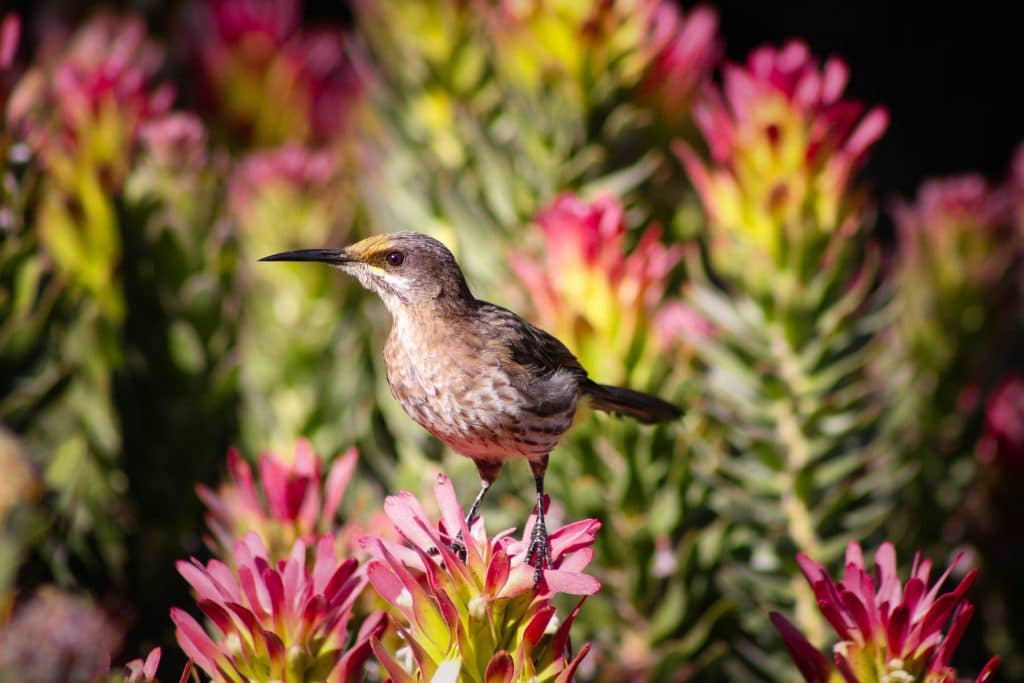
The Cape sugarbird is known for its extraordinarily long tail feathers. It also has a long, decurved beak designed for nectar feeding, particularly off proteas (or sugarbushes) endemic to the Cape fynbos biome. A dullish brown colour above, sugarbirds have an attractively mottled torso and a bright yellow undertail.
They’re known for their characteristic loud grating call. Though specialised nectar feeders, they will also eat spiders and other insects. They have developed strong claws to hold on in the notorious Cape winds.
Habitat
Cape sugarbirds are endemic to the unique fynbos habitat of Cape Point and other Western Cape reserves, home to many nectar-producing plants like proteas and ericas.
Interesting Fact
The Cape sugarbird plays a crucial role in the pollination of the fynbos. As it feeds on the nectar-rich flowers, it effectively transfers pollen from one plant to another.
3. Lilac-Breasted Roller (Coracias caudatus)
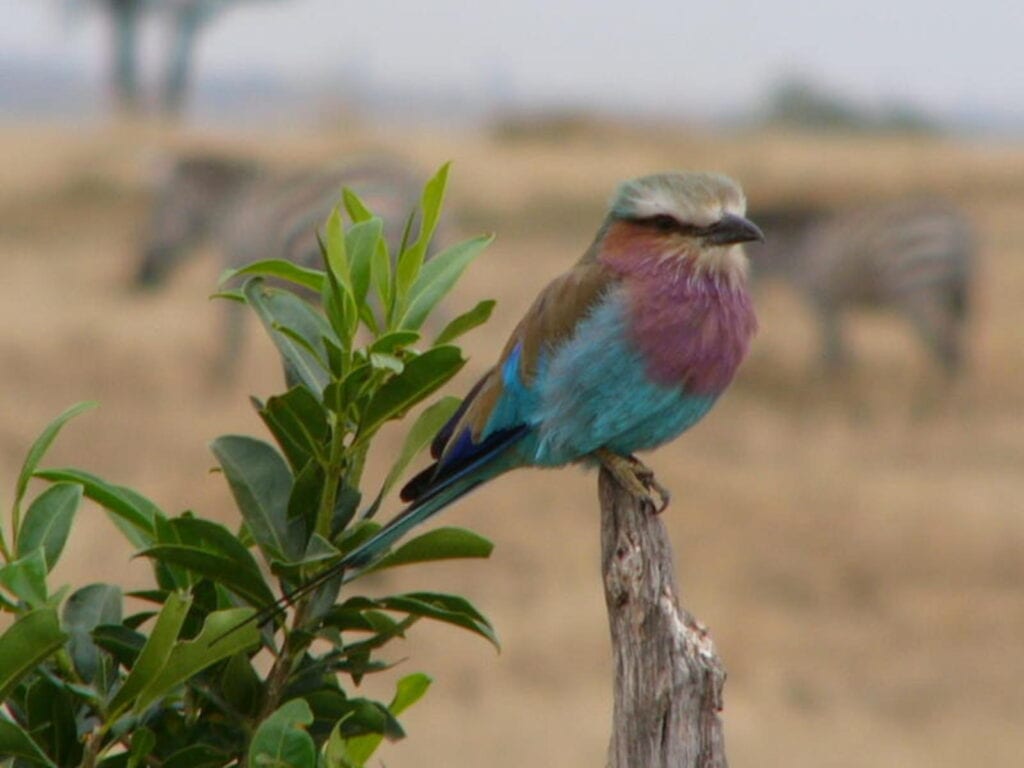
The medium-sized lilac-breasted roller is described as a spectacular living little rainbow with eight different colours in its plumage, including its standout lilac breast and vivid turquoise underparts. Rollers are often seen perched in a good elevated lookout spot. They are monogamous and highly territorial.
They usually live in pairs, and nest in holes in trees or termite mounds. Their diet includes grasshoppers, crabs, beetles, small lizards, amphibians, rodents, and birds. They swoop and catch them on the ground with their strong, hook-tipped beaks.
Habitat
Open bushveld savannahs and riverside habitats throughout southern and eastern Africa.
Interesting Fact
Rollers are named after their breathtaking aerial acrobatics during courtship, which includes a series of swift dives and rolls.
4. Malachite Kingfisher (Corythornis Cristatus)
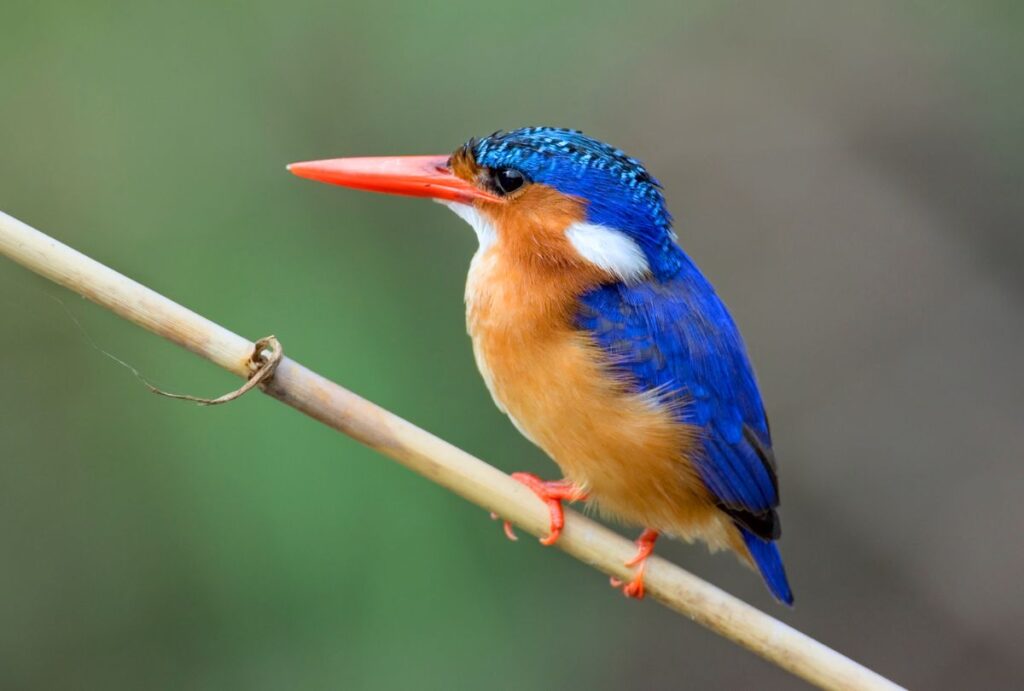
This small wetland kingfisher, with its iridescent blue and vibrant orange colours, is a little jewel of the South African bush. Found in almost all water-rich areas, its hunting behaviour is to sit motionless before rapidly darting down and snatching its prey from the water.
Their diet includes fish, frogs, crabs, tadpoles, and aquatic insects. Their call is a loud ‘tshik’ sound often uttered during flight. Mating pairs usually nest in burrows that they excavate in riverbanks.
Habitat
They are found throughout South Africa around freshwater bodies like rivers, lakes, wetlands, and coastal estuaries. They even occur in drier areas like the Kalahari basin and the western Karoo.
Interesting Fact
After catching its prey, usually a small fish, the bird returns to its perch, beats it against the branch to kill it and softens it before swallowing it head-first.
5. Southern Yellow-Billed Hornbill (Tockus Leucomelas)
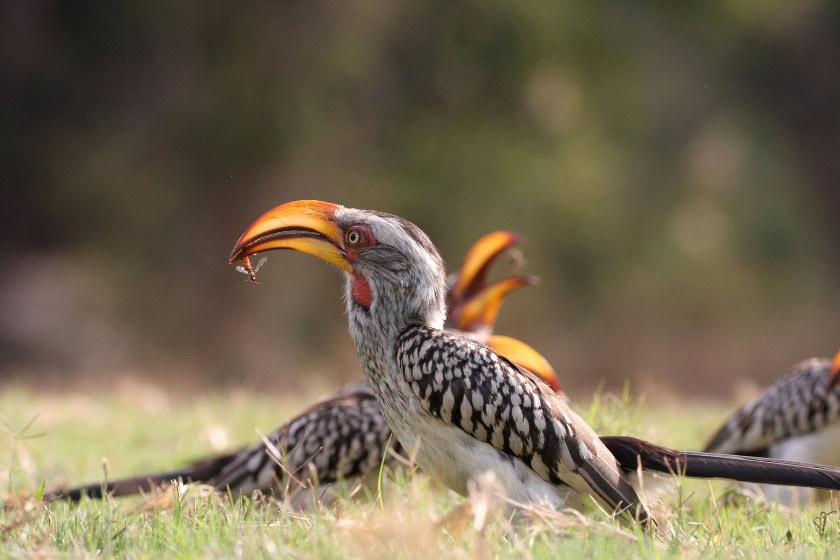
This intelligent and often amusing bird was rather bizarrely introduced to the world as Zazu in The Lion King! It’s a medium-sized, omnivorous bird characterised by its large yellow beak and striking black, white, and grey plumage.
It feeds on anything from seeds, fruit, bird chicks, termites, ants, frogs and chameleons. Yellow-billed hornbills are monogamous, and the male will ‘woo’ the female by bringing her food before mating! After mating, the female will close herself into a hole in a tree, and the male will continue feeding her until the eggs hatch.
Habitat
Hornbills are found in dry, open savannahs, acacia, and broadleaved woodlands, where they can be seen foraging on the ground.
Interesting Fact
Known for its intelligence, this bird has a mutualistic relationship with dwarf mongooses. They often forage together companionably to their mutual benefit.
6. Bateleur Eagle (Terathopius Ecaudatus)
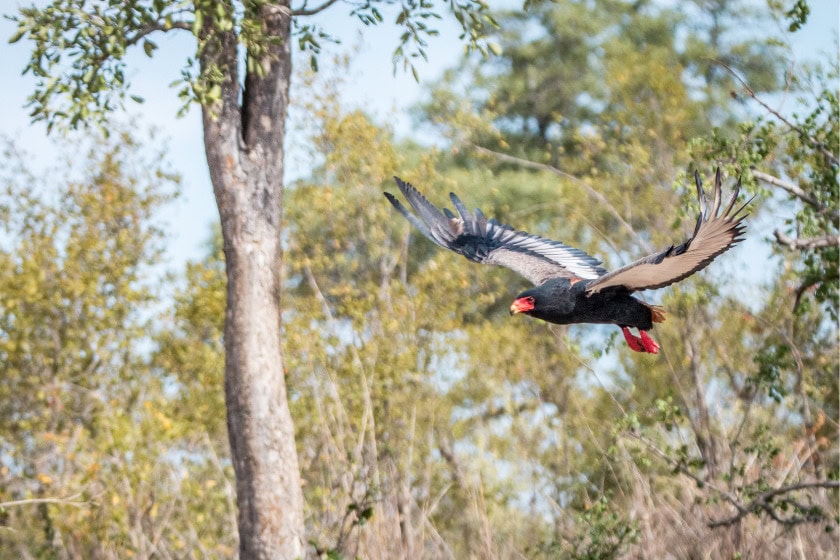
The largest of the snake eagles, the bateleur is a powerful raptor with a distinctive red face and legs, and a short tail that gives it a unique silhouette in flight. The females are bigger than the males, and the couples engage in spectacular aerial acrobatics during their mating flights.
Bateleur eagles pair for life and use the same nest, usually in a large tree, for years. A single egg is laid and hatches after about 55 days, incubated mainly by the female. Bateleurs’ diet includes mice, snakes, birds, carrion (especially road kills) and lizards.
Habitat
Bateleur eagles are found in grassland and acacia savannahs over most of sub-Saharan Africa, though their numbers are reportedly declining.
Interesting Fact
Bateleurs love the sun! They’ll bathe, stand in a classic upright ‘phoenix pose’ with their wings held out, and even turn to follow the sun.
7. Knysna Turaco (Tauraco Corythaix)
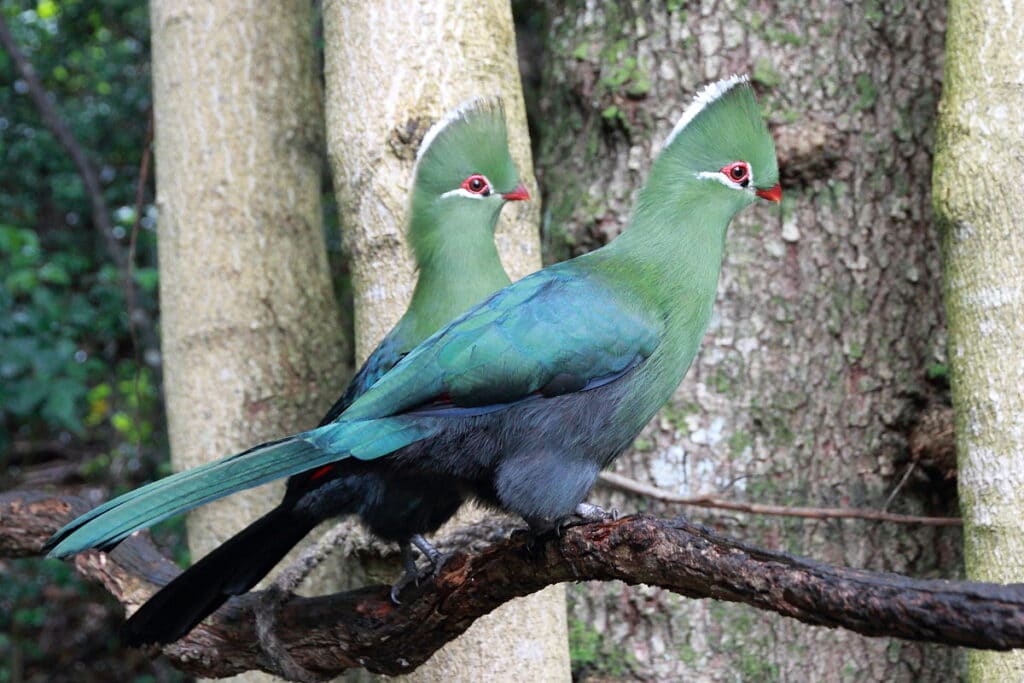
Previously known as the Knysna loerie, this medium-sized bird is a delightful soft forest green, with iridescent blue wing and tail feathers and dramatic red wing patches. It has a prominent white-tipped crest, eye-catching red and white eye ‘makeup,’ and a red bill.
Habitat
It’s endemic to southern Africa and is primarily found in the Eastern and Western Cape. Its prime habitats are the dense, evergreen indigenous forests and woodlands in these areas, most notably the Knysna and Tsitsikamma forests and the Amatole and Hogsback mountains.
Interesting Fact
The Knysna turaco is known for its characteristic loud and melodious call.
8. Martial Eagle (Polemaetus Bellicosus)
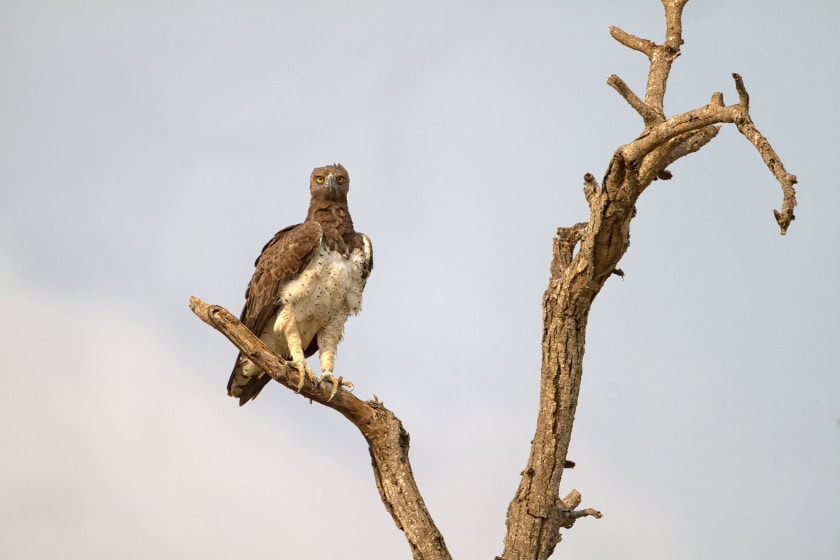
The martial eagle is one of the world’s largest eagles, with a wing span of almost two metres. The females are even larger. This majestic raptor commands immediate attention with its piercing eyes, dark brown head and upper parts, and beautiful speckled plumage. Its powerful talons are strong enough to break a human arm.
Birds form an important part of the martial eagle’s diet, including bustards, guineafowl, and francolins. It’ll also take dassies (rock hyrax), small antelopes, and monkeys. A mating pair usually has two huge nests that they use in alternating years. The Lower Sabie area in the Kruger is known for its martial eagle and other bird sightings.
Habitat
Martials prefer open and semi-open habitats, savannahs, and semi-desert regions, where they’re often seen soaring high on the thermals.
Interesting Fact
Martial eagles are apex predators with exceptional eyesight, estimated to be around three to four times more acute than humans. This allows them to spot their prey from several kilometres away.
9. Blue Crane (Anthropoides Paradiseus)
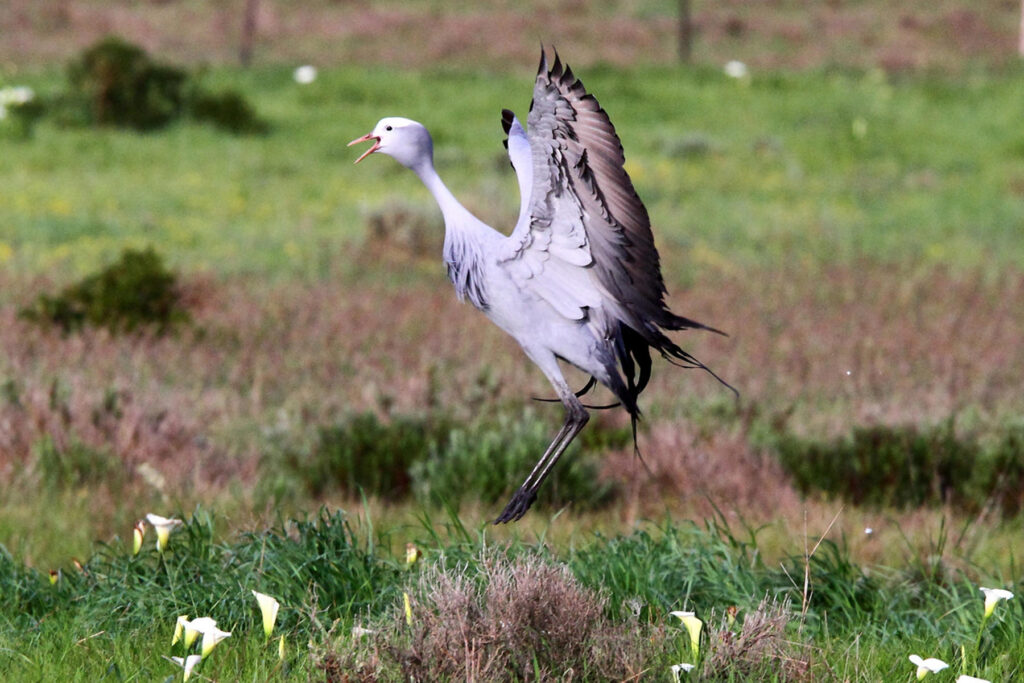
This elegant endemic bird is the national bird of South Africa. It has beautiful blue-grey plumage, a striking crown of feathers, and trailing tertial plumes. They stand about 110 – 120 cm tall, well over 3 feet tall.
Blue cranes commonly forage on the ground and are omnivorous with a diet of bulbs, seeds, leaves, roots, grasshoppers, small mammals, reptiles, frogs, fish, and crustaceans. They make loud, guttural, bugle-like calls, are monogamous, and breeding pairs are strongly territorial.
Habitat
Blue cranes are found in the Mpumalanga Highveld, the Free State, KwaZulu-Natal, and the Eastern and Western Cape, with about 60 birds in and around Etosha pan. They prefer open grasslands but are also found in cultivated pastures and croplands. In drier areas like the Karoo and Namibia, they frequent dwarf shrubland and dry grasslands.
Interesting Fact
Blue cranes engage in a complex and graceful courtship dance, which includes intricate steps, wing flapping, bowing, jumping, and tossing grass into the air.
10. African Fish Eagle (Haliaeetus Vocifer)
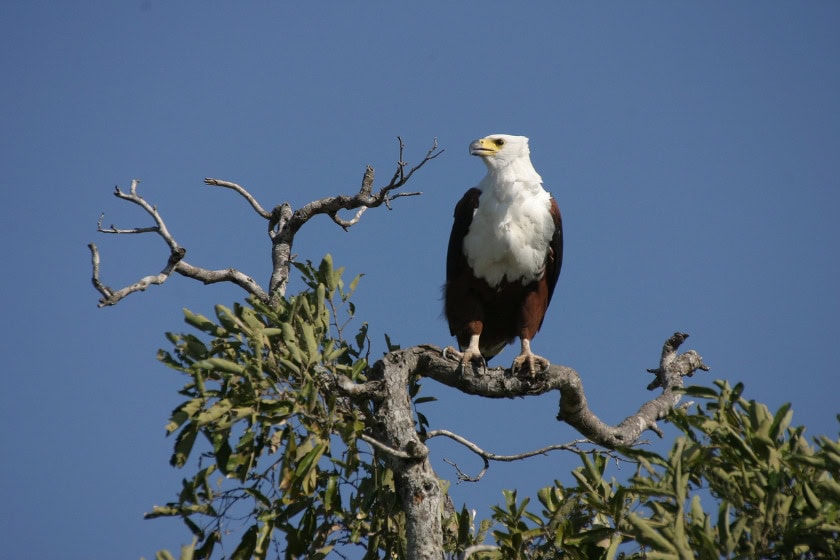
This large and handsome raptor is instantly recognisable by the striking contrast of its white head, chest, and tail against the rich brown of its body. It strongly resembles the American bald eagle with the same bold colouration.
The fish eagle feeds mainly on catfish and lungfish but has been known to take flamingoes and other aquatic birds. It also steals prey from other birds. It’s frequently seen sitting high in a tall tree from which it will swoop down and skilfully snatch its prey from the water with its talons.
Habitat
Widespread throughout southern Africa, it’s commonly found near large water bodies like lakes, rivers, and reservoirs.
Interesting Fact
It’s renowned for its clear and characteristic call, dubbed ‘the voice of Africa’. It’s said that once you’ve heard its distinctive cry, you’ll remember it forever.
At Discover Africa, we’re passionate about showcasing Africa’s incredible wildlife, and South Africa’s remarkable birdlife certainly enhances the wildlife experiences you can choose from. Wherever your dream destination is, we’ll tailor the perfect, unforgettable birding safari tour for you.






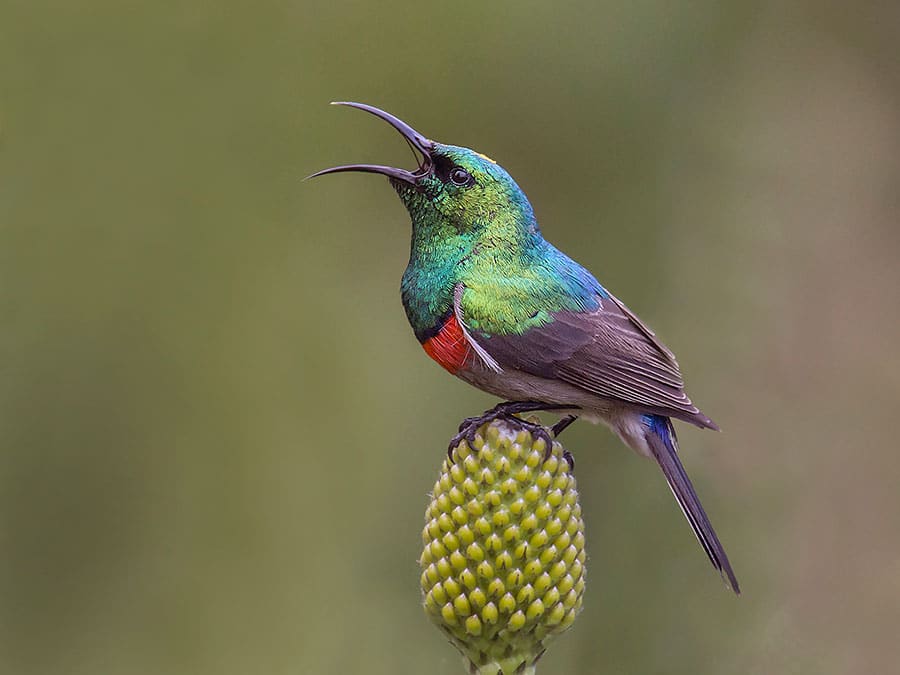


 Blog List
Blog List

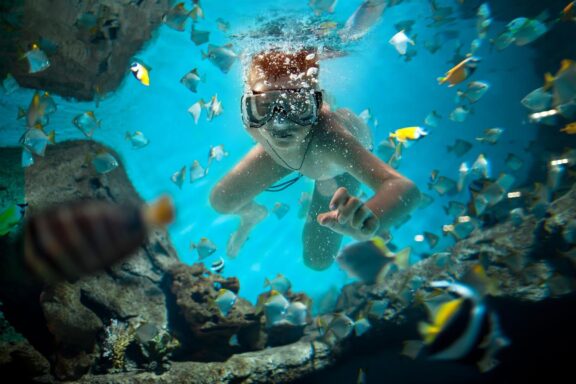
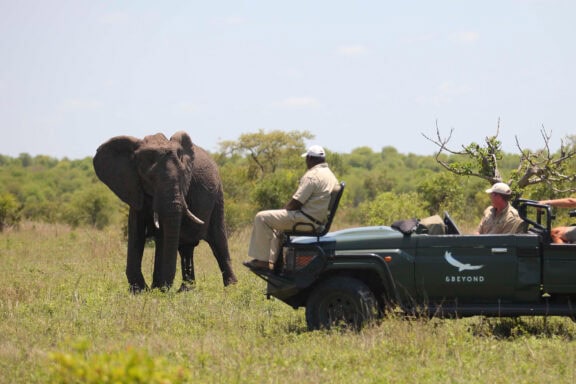
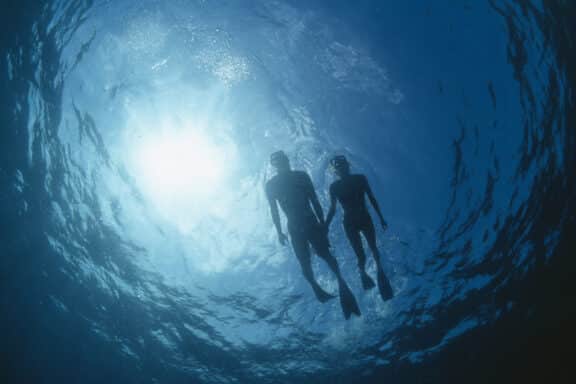


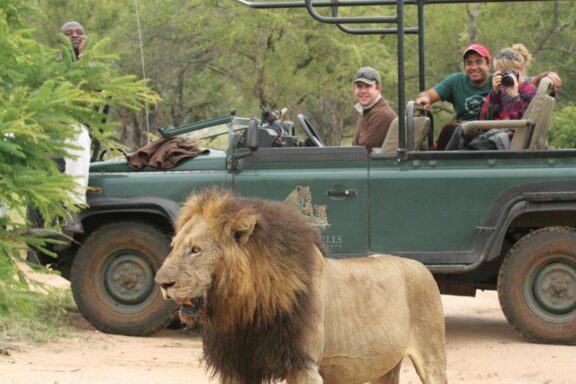
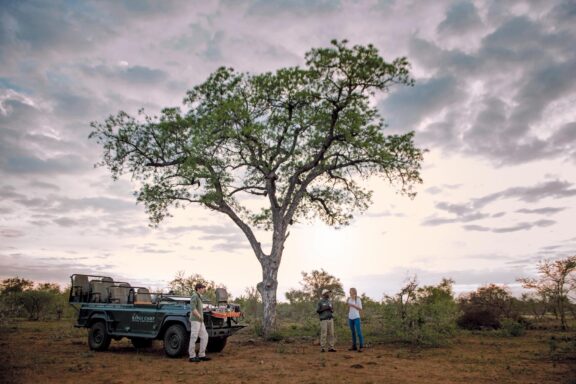
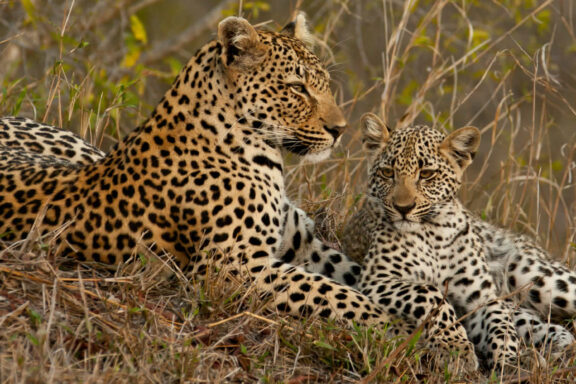
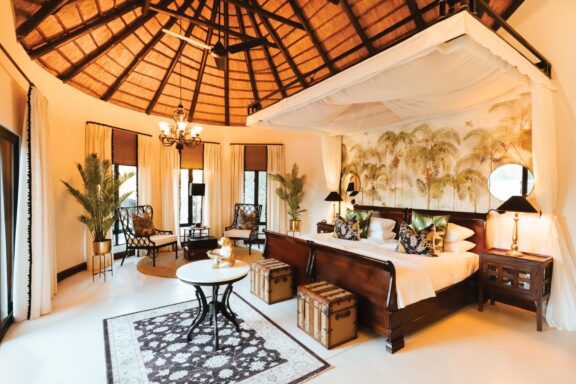
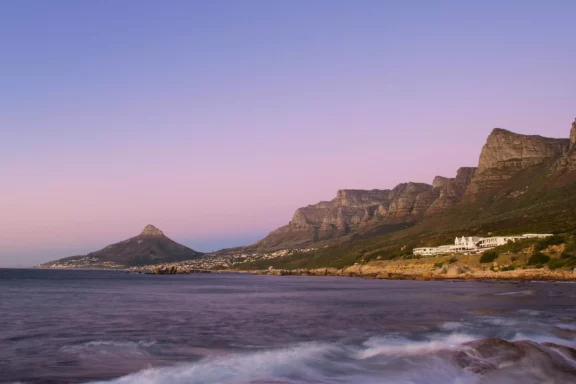
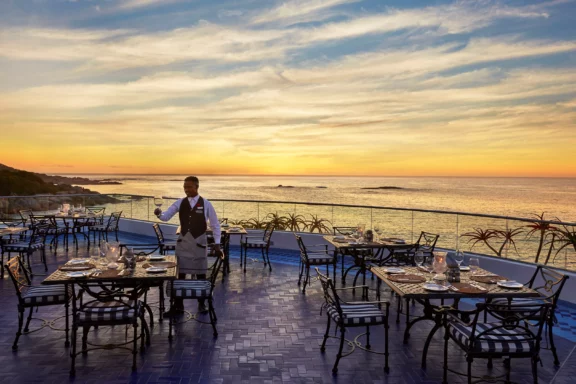

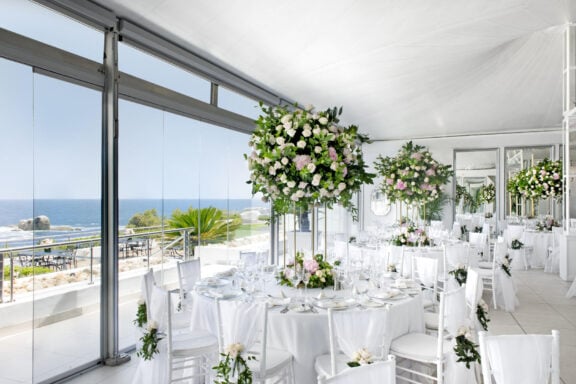








Written by Brendan White
• Travel Writer
Verified by Devryn Panaino
• Africa Safari Expert
Part of the South Africa Safari & Birding Safaris Collections